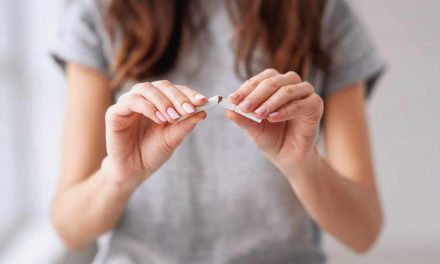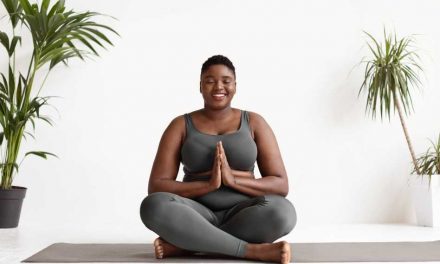 Daniel J. Nohra Revilla, DO
Daniel J. Nohra Revilla, DO
Neurology
Orlando Health
Migraine, a neurological condition, leads to an intense and debilitating type of headache. This often compels those affected to seek solace in a dark, tranquil space for hours or even days, waiting for the agony to subside, frequently relying on potent medications for relief.
An estimated 1 billion people — including 18 percent of all women — suffer from migraines, making it one of the most prevalent maladies globally and resulting in an estimated $193 billion annually in medical expenses and lost productivity.
While medicines that block pain pathways in the brain are used to treat the acute phase of the disease — an active headache — simple lifestyle changes and practices may keep symptoms at bay without medical intervention. Here are four tips you can adopt now for more headache-free days this year.
Get Enough Sleep
Brains need regular sleep to function properly — six to eight hours a night for most adults — so it’s no surprise that insomnia is a frequent trigger for both the frequency and intensity of migraine attacks. And once the headache sets in, sleep may seem impossible, creating a debilitating insomnia-headache cycle. You can avoid that loop by improving both the quality and duration of the sleep you get on a regular basis. Sleep experts recommend these steps to fight insomnia and assure a well-rested, healthy brain:
- Spend some time outdoors each day to keep your circadian rhythm — a 24-hour cycle that controls your sleep-wake pattern —in tune with natural light.
- Establish a wind-down routine and stick to it — maybe a cup of herbal tea followed by a warm bath and 10 minutes of reading. Consistency is more important than what you do to tell your body it’s bedtime now.
- Know how much sleep you need to function best, then go to bed at the same time each night and awake at the same hour in the morning to achieve that goal.
- Create a sleep-friendly, sleep-only space. Keep your bedroom cool, dark and free of technology like telephones and televisions. Don’t use your bed for anything but sleep. If you haven’t fallen asleep after 20 minutes, get up and repeat your wind-down routine.
Watch What You Eat
Keep what you eat and when you eat as consistent as possible because sudden changes in nutrition — even missed meals — can bring on migraine attacks or make symptoms more painful. Keep your blood sugar level steady by eating regularly, including small, nutritious snacks between meals. Think breakfast-snack-lunch-snack-dinner-snack. Many people decide to diet after the holidays, and a sudden change in eating frequency can make headaches worse.
Know which foods – if any – trigger headaches for you. While research suggests food triggers may be highly personal, alcohol, aged cheese and cured meats are frequently listed as trouble-makers, so stick to the fruits and nuts on the charcuterie board.
Stay Hydrated
Even mild dehydration can impact people with migraine disease, so drink water throughout the day to stay hydrated. There’s no particular amount that is right for everyone (although many experts recommend six to eight glasses of water a day), but whenever you feel thirsty or hungry, have a drink. Researchers are still exploring the connection between hydration and migraines, but we do know that staying hydrated promotes overall nerve and metabolic health, so drink up.
Avoid Triggers
People can often identify specific non-food triggers that set off their migraine attacks. Flashing or even strong lights are a common trigger, as are strong smells like bleach or floral perfumes. Know your triggers and avoid them. You may not be suited to work in an industry that has strong smells or in an office with bright lights. Here are some other commonly recognized non-food triggers:
- Sounds. Loud noises, whether prolonged or sudden, may trigger migraine attacks in some people, which may be why, in one study, people with migraine disease rated ambulance and police car sirens and railroad crossing bells as significantly more unpleasant than did a control group. Additionally, once a migraine takes hold, you may be more sensitive to noise and need to retreat to somewhere quiet.
- Physical activity. An active lifestyle is good for your overall health. It reduces stress, which is often a headache trigger; improves sleep, also essential to brain health; and causes your body to release endorphins, natural painkillers that also induce a sense of well-being. So help keep migraine attacks at bay with regular exercise. However, during a headache, going for a jog may make things worse. About half of all migraine headaches are accompanied by kinesiophobia, a fear of pain occurring due to movement. That’s your body telling you in no uncertain terms to take it easy for now.
- Weather changes. Many people with migraine disease report worsening symptoms just before or during storms or near lightning strikes. A 2023 study in Japan found that low barometric pressure, barometric pressure changes, higher humidity and rainfall were all associated with more headache occurrences in individuals with migraine. So far, researchers have been unable to find a direct link, but the search continues. Meanwhile, because there’s not much you can do about weather, try to avoid or manage other triggers that are within your control to improve your chances of remaining headache-free.
The key to managing migraine symptoms is consistency. The more you can provide your brain and body with consistent sleep, nutrition and hydration along with consistent hormone levels and an active lifestyle, the more headache-free days you can enjoy.
Source: Orlando Health, www.orlandohealth.com


















